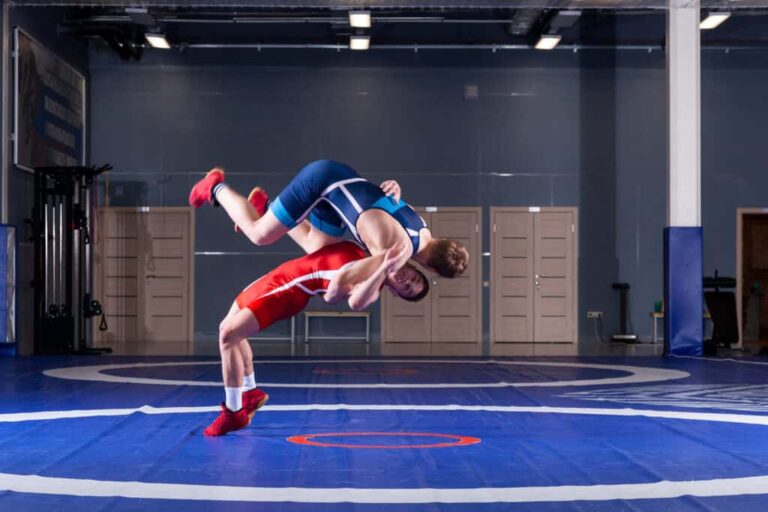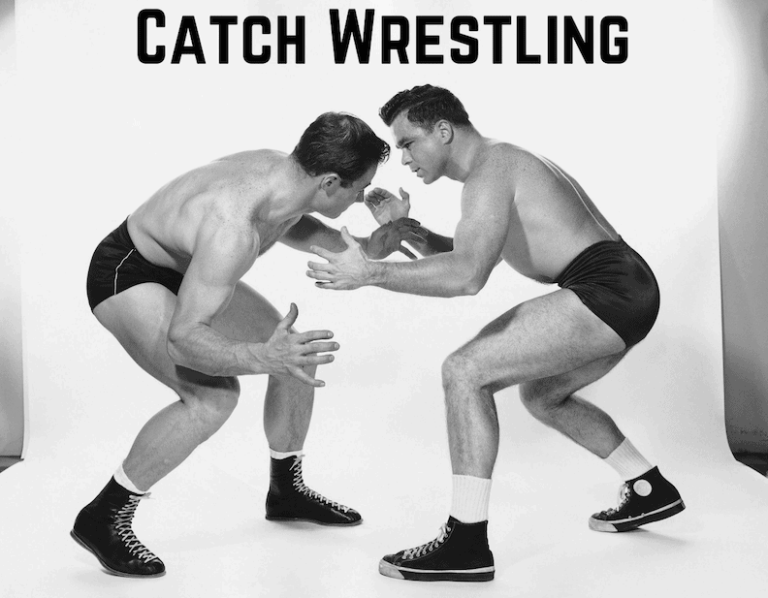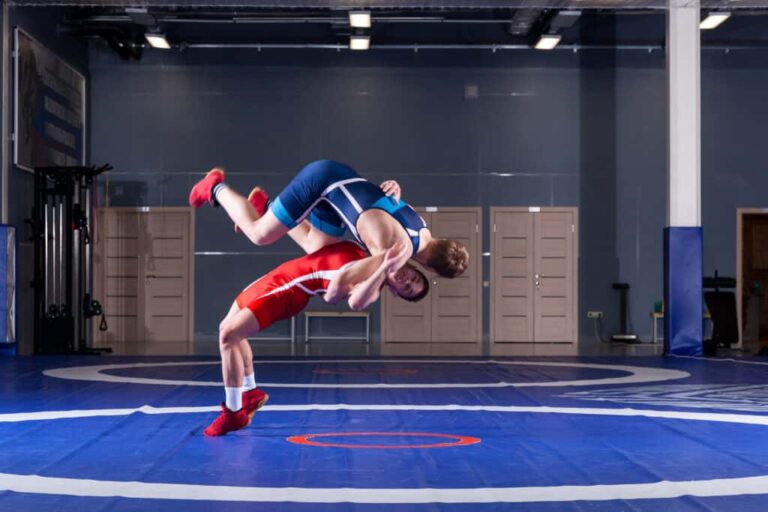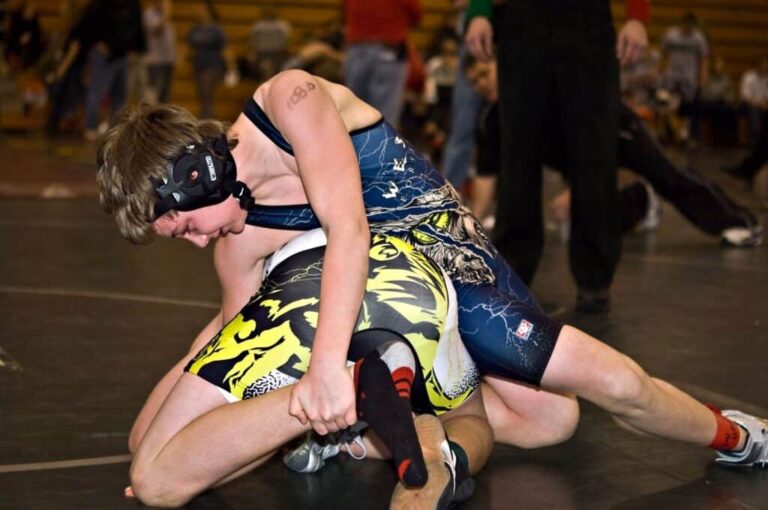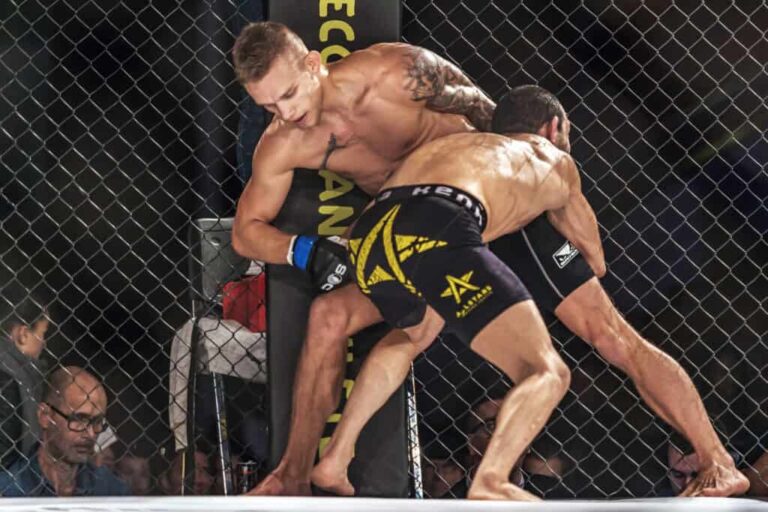Is Wrestling The Hardest Sport In High School?
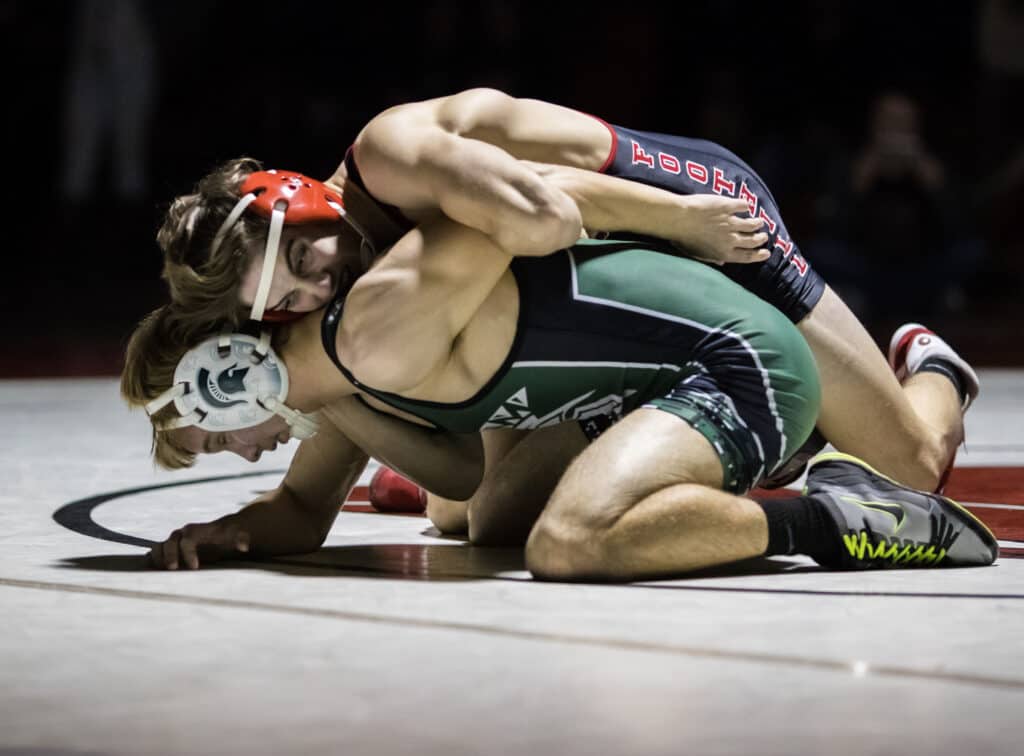
The most apparent benefit to high school sports is physical activity, but there are other perks too—high school sports make dropping out of school less likely, and participants are more likely to go to college. That’s all great, but it’s no exaggeration to say that school sports take a lot of effort and hard work. But which high school sport is the most difficult?
Wrestling is the hardest sport in high school, though it’s subjective. Wrestlers have to meet a stringent weight requirement, often cutting large amounts of weight to do so. They also need to juggle weightlifting, cardio, and practice and rarely get recognition for their time in the wrestling room.
This article will explain why wrestling is the most demanding high school sport. Specifically, we’ll go over how difficult it can be to maintain the proper weight, what training consists of, how wrestlers have to learn to manage their time properly, and how stressful wrestling can be.
Why Is Wrestling the Hardest High School Sport?
There are three significant factors high school wrestlers must contend with if they want to succeed. These include:
- Maintaining the proper weight
- Juggling their classwork and social life with practice and working out
- Dealing with the stress that comes with wrestling
Wrestling is hard work, and many people would tell you they had to put in a lot of effort to become good at the sport. In fact, plenty of guys who try out early in the season will quit the team before the first scheduled match, let alone the end of the season.
If you’re curious about the factors that make high school wrestling a challenging sport, keep reading – we’ll go into greater detail below.
Maintaining the Proper Weight
It takes a tremendous amount of effort—both physical and mental—to become a good wrestler. The first thing we’ll discuss is the effort it takes to maintain a certain weight. To understand, you’ll have to look at The National Federation of State High School Associations (NFNS).
To summarize quickly, the NFNS is an organization that writes and supports competitive rules for most high school sports and US sports activities. We’re mentioning the NFNS because they are the guys who make the general rules for wrestling.
Schools can modify the rules to some extent, but for the most part, there are 14 different weight classes. A student must adhere to a strict diet and fitness plan to maintain a weight measurement that corresponds to their weight class.
High school wrestlers often have to watch their classmates eat foods that they can’t eat until the season ends. It can be challenging to deal with seeing their friends eating burgers and fries while they have to stick to low-calorie foods and drinks.
Another issue with maintaining weight is that some students end up weight-cutting. Weight cutting is when participants in competitive sports (where weight is a deciding factor) find methods to lose weight quickly. You can find advice on how to cut weight safely, but even then, health and nutritional experts still advise athletes against it.
There are two ways to cut weight as a high school wrestler:
- Some athletes drop muscle and fat-weight weeks before the competition.
- Other athletes choose to lose water weight in the few days before the match starts.
Using either of these weight-cutting methods can lead to health problems, though, as dropping water weight can cause dehydration, which can cause cramping and brain swelling in more extreme circumstances.
Long-term weight loss from minimal food intake can result in malnutrition, leading to depression and muscular atrophy. Not the greatest thing to do to your body, especially at a time when you should be growing.
Juggling Life With High School Wrestling
It’d be nice if we could just do things without training or practice; unfortunately, that’s not possible. Naturally gifted people have to continue to work at their talent. A scholastic wrestler needs to have a proper weight training plan if they want to stand any chance against their opponent. A general weight training guide would be at least twice a week in-season and three times a week in the off-season.
Anyone looking to wrestle will need to work on their cardio and agility as well. Matches can last up to six minutes, with two-minute breaks in between. If you have terrible endurance and poor anaerobic conditioning you won’t last very long trying to pin another person for six long minutes.
Endurance training can be as simple as 30 minutes of running, but more intense training can involve sprinting.
A wrestler can improve their agility either by experience through actual matches or jump rope and obstacle courses. All in all, training is going to take quite a bit of time out of your schedule, and eventually, it’ll all add up.
There might be times when you’ll have to miss out on going out with friends, and you’ll have to make sure you’ve set aside enough time for homework and studying. A big part of wrestling—any sport, honestly—is learning how to manage your time.
Dealing With Wrestling Stressors
Everything in this article so far contributes to one big problem high school wrestlers can face: being a high school wrestler can be intensely stressful. One stressor is trying to maintain their weight so that they don’t fluctuate between classes. It’s not uncommon for athletes to stay in the smaller weight classes for a better chance.
A competitor can be two pounds heavier than their stated weight class at maximum at the end of every season. Every day until a weigh-in day can be nerve-racking because a wrestler is constantly trying to keep their weight within their class parameters.
Students also have to be willing to dedicate a lot of their time to training. Some high schoolers may feel some trepidation about having to give so much of their time to a single thing while everyone else is going out with friends. Since other sports such as football and basketball do not have weight limits it allows them to enjoy their life outside of practice and games more than it does for a high school wrestler.
Just keeping to the proper diet can be challenging for high school wrestlers when they’re seeing everyone else eat burgers and candy while they have to stick to healthier foods. Dieting can be a struggle for many people that aren’t participating in a sport.
Perhaps one of the most significant issues is that wrestling isn’t an overwhelmingly popular sport. Sure, high school wrestling has its dedicated competitors and fans, but it’s not as big as football or basketball. Some competitors may feel that they participate in high school wrestling for proportionally less notoriety.
Conclusion
This article may seem like I’m saying wrestling is the most brutal high school sport ever, but that’s honestly subjective. There are plenty of sports that require lots of dedication and come with health hazards and plenty of stress. What I am trying to say, however, is that wrestling can be very intense and laborious.
Wrestling takes a lot of time and effort. Therefore, it’s best if you do a bit of self-reflection before seriously deciding to become a scholastic wrestler.
